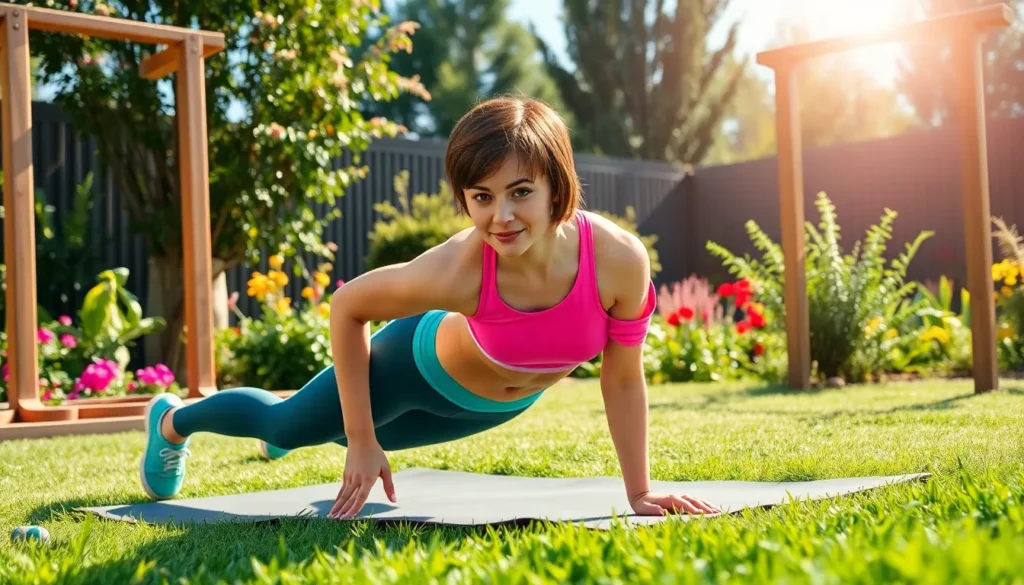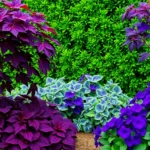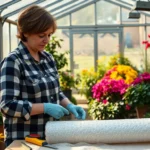We’re living in an era where home fitness has transformed from a luxury to a necessity. With gym memberships becoming increasingly expensive and outdoor space at a premium many of us are discovering the incredible potential hiding right in our backyards.
Creating a garden gym isn’t just about saving money – it’s about designing a personalized fitness sanctuary that combines the benefits of fresh air natural lighting and complete privacy. Whether you’ve got a sprawling lawn or a compact patio we’ll show you how to transform any outdoor space into your ultimate workout destination.
From simple DIY equipment setups to sophisticated outdoor gym installations the possibilities are endless when you think outside the traditional indoor box. Your garden gym can become the perfect blend of functionality and aesthetics offering year-round fitness opportunities while adding value to your property.
Transform Your Backyard Into a Functional Outdoor Fitness Space
Creating your outdoor gym starts with strategic planning that addresses location, weather, and foundation elements. We’ll guide you through the essential considerations that determine your garden gym’s success and longevity.
Choose the Right Location for Maximum Privacy
Privacy becomes your top priority when selecting the perfect spot for your outdoor workout area. Corner spaces away from neighbor windows offer the most seclusion while maintaining easy access from your home. Trees and existing landscaping provide natural barriers that shield your exercise routine from prying eyes.
Positioning your fitness zone near existing structures like sheds or garden walls creates additional privacy without extra costs. We recommend choosing spots that face away from main walkways and high-traffic areas of neighboring properties. Mature shrubs or bamboo screens can enhance privacy while adding aesthetic appeal to your workout space.
Distance from your house shouldn’t exceed 50 feet to maintain convenience and safety during evening workouts. Areas with natural windbreaks protect you from harsh weather while creating a more intimate exercise environment. Strategic placement behind existing garden features like pergolas or gazebos maximizes both privacy and visual appeal.
Consider Weather Protection and Drainage
Weather resistance determines how often you’ll actually use your garden gym throughout the year. Covered areas under existing roof overhangs or large trees provide immediate protection from rain and intense sun. Retractable awnings offer flexible coverage that adapts to changing weather conditions.
Drainage answers prevent water damage and create safer workout surfaces during wet seasons. Sloped areas naturally direct water away from your exercise equipment and flooring materials. We suggest avoiding low-lying spots where water typically collects after storms or heavy rainfall.
Wind protection enhances comfort during outdoor workouts and protects lightweight equipment from being displaced. Solid fencing or dense hedgerows create effective windbreaks without blocking natural light. Strategic positioning near existing structures reduces exposure to prevailing winds while maintaining good ventilation.
Plan for Proper Flooring Options
Rubber mats provide excellent cushioning and slip resistance for high-impact exercises like jumping jacks and burpees. Interlocking rubber tiles offer modular installation that accommodates irregular spaces and allows for easy replacement of damaged sections. These materials resist weather damage and provide consistent traction in wet conditions.
Artificial turf creates a versatile surface that works well for cardio exercises and stretching routines. Professional-grade turf with proper drainage backing prevents water accumulation and maintains its appearance year-round. This option blends seamlessly with existing landscaping while providing a clean workout environment.
Concrete or paver foundations support heavy equipment like pull-up bars and squat racks without shifting or settling. Level surfaces ensure equipment stability and reduce injury risks during weightlifting exercises. We recommend adding non-slip coatings or removable mats over hard surfaces to improve comfort and safety during floor exercises.
Create a Budget-Friendly DIY Garden Gym Setup
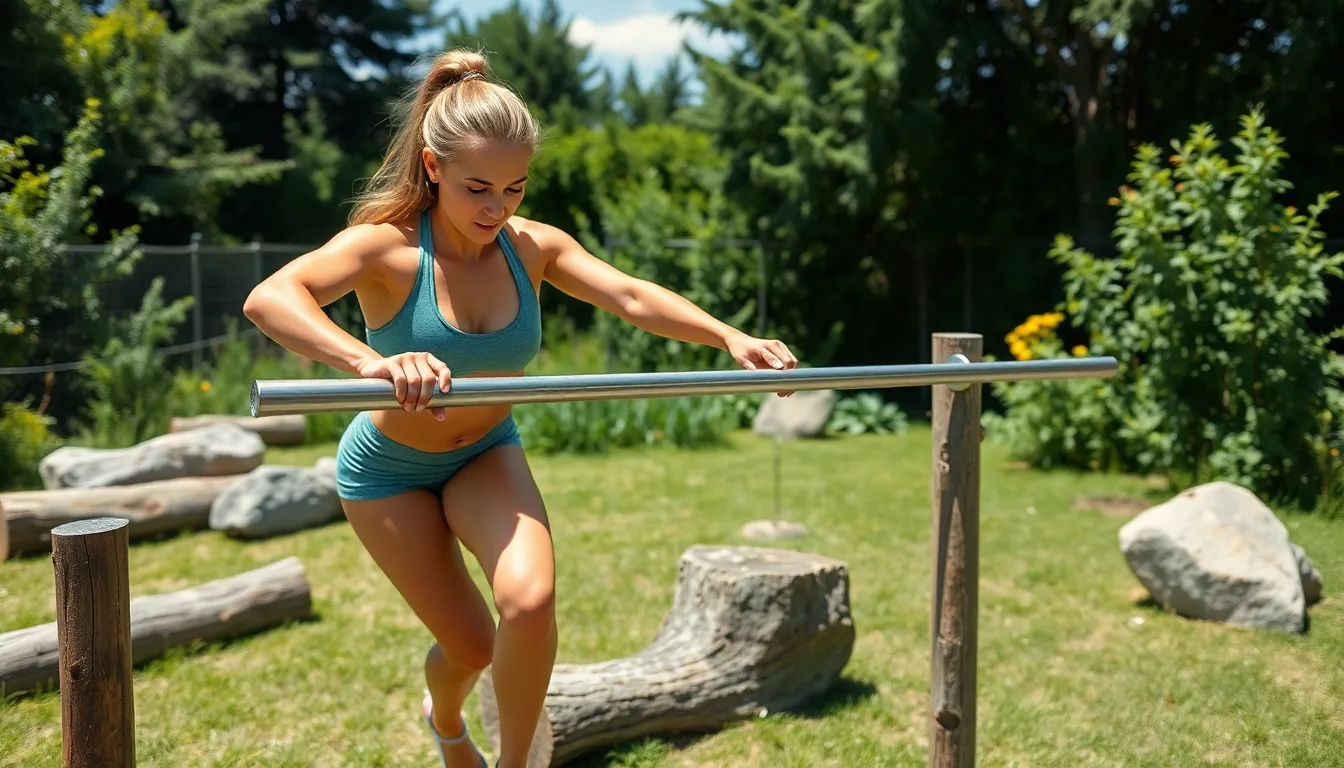
Transforming your outdoor space into a functional fitness area doesn’t require very costly. We can create an effective garden gym using innovative DIY answers that maximize both functionality and savings.
Build Your Own Pull-Up Bars and Parallel Bars
Pull-up frames offer exceptional versatility when constructed from galvanized steel pipes or wooden beams. We recommend securing these structures with concrete footings that can handle various body weights safely. Galvanized steel provides weather resistance while wooden beams offer a natural aesthetic that blends seamlessly with garden environments.
Parallel bars transform basic materials into professional-grade equipment for dips and upper body exercises. Metal pipes create durable parallel bar systems when properly stabilized with ground anchors. Wooden beam alternatives provide cost-effective answers that we can customize to exact height requirements and spacing preferences.
Construction considerations include measuring the distance between bars at shoulder width for optimal exercise form. We ensure all connections use heavy-duty bolts and brackets that withstand repeated stress from ever-changing movements.
Use Natural Elements Like Logs and Rocks
Balance and agility courses use logs, rocks, and old tires to create challenging obstacle training circuits. We position these natural elements strategically to develop coordination while testing speed and movement patterns. Stone placement creates stepping patterns that enhance foot placement precision during agility drills.
Natural weight alternatives transform granite stones and logs into functional strength training tools. We select rocks based on weight distribution and grip comfort for carrying exercises and functional lifting movements. Log selection focuses on diameter and length that accommodate various strength levels within our outdoor workout routines.
Terrain integration maximizes existing industry features by incorporating slopes and uneven surfaces into exercise circuits. We use natural contours to add difficulty variations that challenge stability and core engagement during movement patterns.
Repurpose Household Items for Exercise Equipment
Tire sledgehammer stations convert old automotive tires into powerful strength training tools when paired with standard sledgehammers. We secure tires to prevent movement during high-intensity striking exercises that develop explosive power and cardiovascular endurance.
Resistance band attachment systems use existing structures like fence posts and wooden beams for versatile exercise options. We install heavy-duty hooks and anchor points that accommodate multiple resistance levels and exercise angles throughout our garden gym space.
Storage answers repurpose plastic containers and wooden crates into weather-resistant equipment organization systems. We position storage near exercise areas to maintain equipment accessibility while protecting smaller items from outdoor elements.
Install Professional Outdoor Fitness Equipment
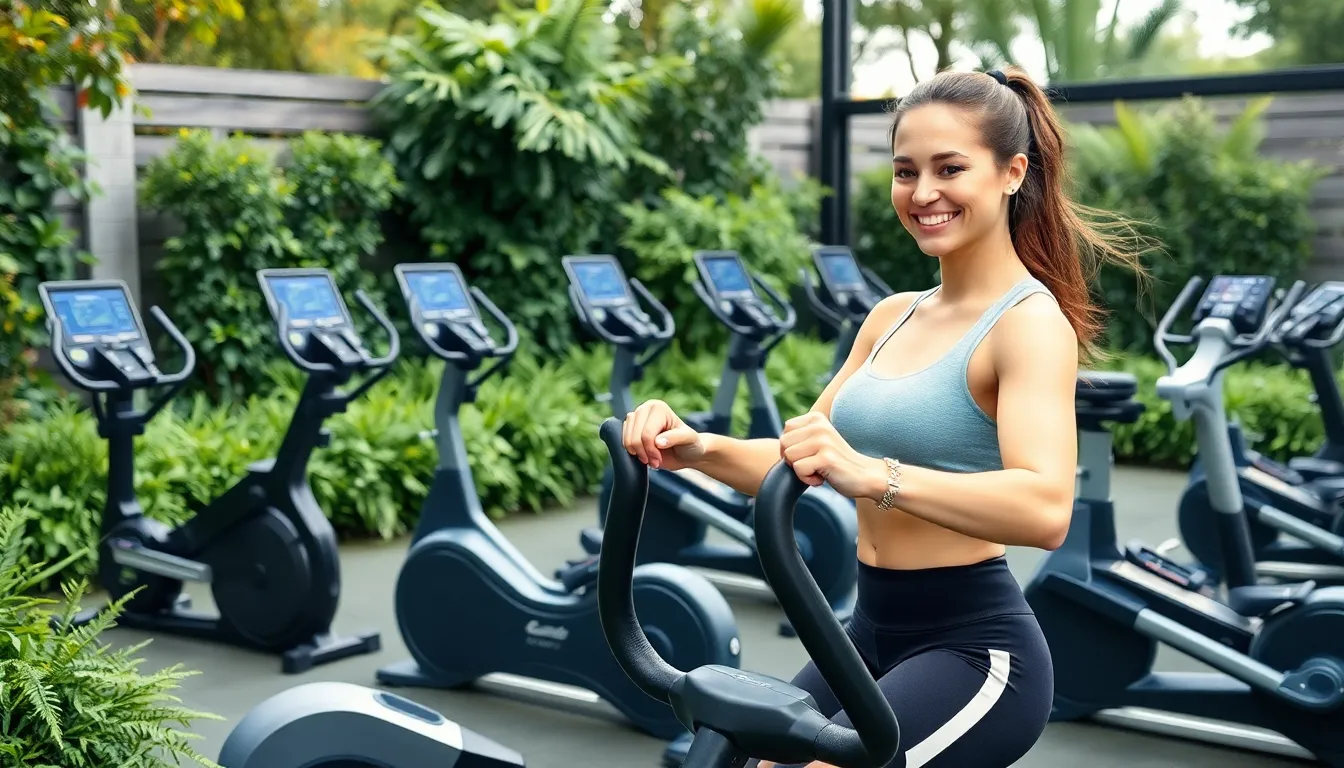
Professional outdoor fitness equipment takes your garden gym from basic to exceptional. Companies like Pro Playgrounds and Kinetic Recreation offer complete turnkey installations that handle everything from planning to setup, making the process seamless for homeowners.
Select Weather-Resistant Cardio Machines
Weather-resistant cardio machines are essential for year-round outdoor workouts. Stainless steel and specially treated aluminum equipment can withstand rain, snow, and UV exposure without losing functionality. Elliptical trainers, stationary bikes, and rowing machines designed for outdoor use feature sealed components and rust-resistant coatings that maintain smooth operation regardless of weather conditions.
Outdoor cardio equipment manufacturers design their products with drainage systems and corrosion-resistant materials. These machines typically include protective covers for electronic displays and sealed bearing systems that prevent moisture damage. We recommend choosing equipment with warranties that specifically cover outdoor use to ensure long-term reliability.
Choose Durable Strength Training Equipment
Durable strength training equipment forms the backbone of any professional garden gym setup. Steel and aluminum construction materials provide the strength needed for heavy lifting while resisting corrosion from outdoor elements. Companies like Greenfields Outdoor Fitness supply specialized outdoor strength equipment designed for parks and residential spaces.
Pull-up stations, parallel bars, and multi-grip chin-up bars made from powder-coated steel offer superior durability. Weight benches and squat racks designed for outdoor use feature weather-resistant padding and reinforced frames that support heavy loads. These installations require concrete footings for stability and safety during intense workouts.
Invest in Multi-Functional Workout Stations
Multi-functional workout stations maximize space efficiency while providing comprehensive exercise options. These stations typically combine pull-up bars, dip stations, resistance training attachments, and bodyweight exercise platforms in a single unit. GameTime provides local sales professionals and certified installers who can customize these stations based on available space and fitness goals.
Professional assembly services like HandyBuddy ensure proper installation and setup of complex multi-functional equipment. These stations often include adjustable components that accommodate different fitness levels and exercise variations. We find that investing in quality multi-functional equipment provides better long-term value than purchasing individual pieces separately.
Design a Yoga and Meditation Garden Retreat
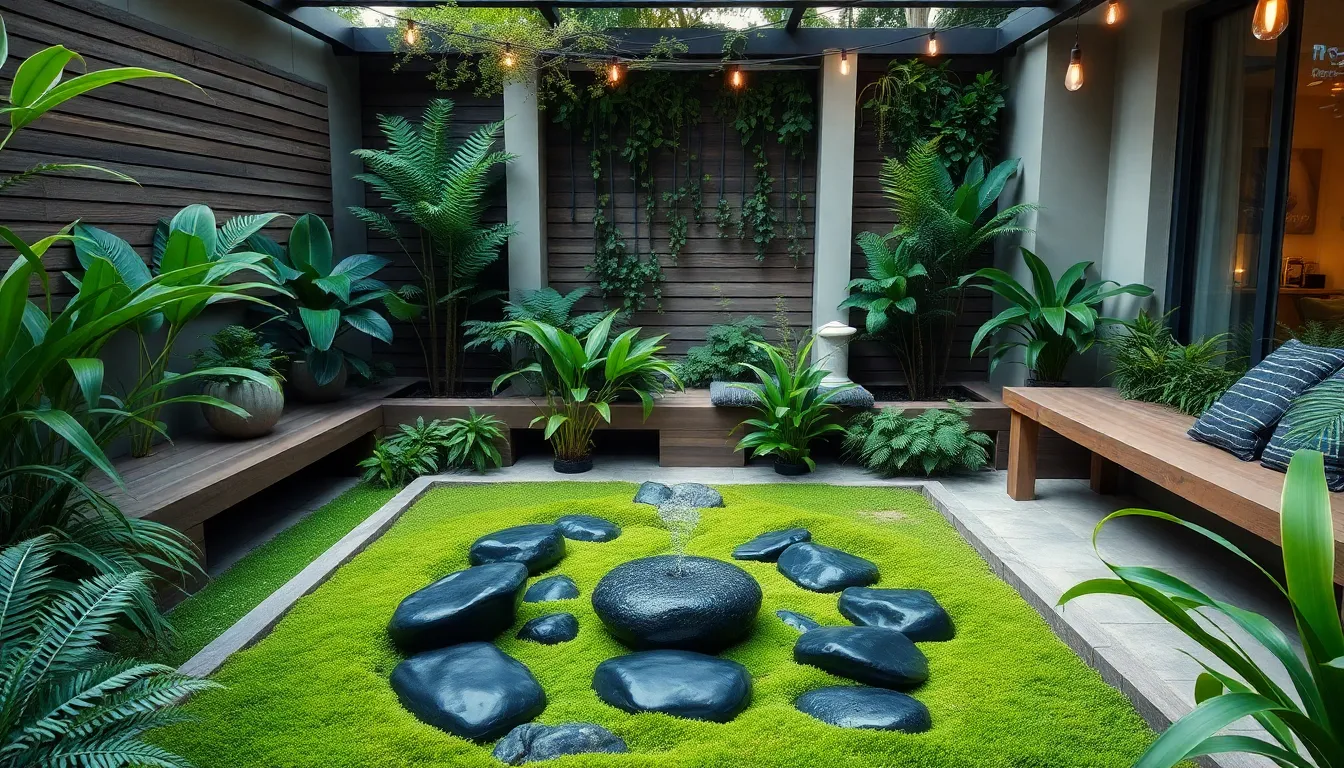
We’ll transform your outdoor fitness space into a serene sanctuary that promotes mindfulness and inner peace. Building a dedicated yoga and meditation garden retreat creates the perfect complement to your high-intensity workout areas.
Create a Peaceful Zen Corner with Natural Elements
Natural elements form the foundation of any successful meditation space. We recommend incorporating a moss garden with artful containers and black stones to create a dramatic yet peaceful ambiance that draws the eye inward. Rock gardens and sensory gardens establish the serene environment essential for deep meditation practices.
Cool colors like greens, blues, and purples work exceptionally well in these spaces. These soothing hues can be introduced through outdoor furniture, decorative elements, and natural greenery that creates visual harmony. Container gardens featuring ferns, dracaena, and elephant ears add lush textures while maintaining the natural aesthetic.
Water features provide the calming soundtrack your retreat needs. Solar powered fountains or small ponds create gentle sounds that mask distracting neighborhood noise. Privacy and shade become crucial elements that ensure your space remains comfortable throughout different times of day.
Plants reflecting yoga pose names add thematic depth to your garden design. Consider grouping these meaningful selections to create focal points that inspire your practice.
Install Proper Lighting for Evening Sessions
Evening meditation sessions require thoughtful illumination that maintains tranquility. Soft, warm lighting preserves the peaceful ambiance we’ve carefully cultivated during daylight hours. Solar powered lights offer an eco friendly solution that eliminates the need for electrical connections.
String lights create gentle ambient lighting that won’t interfere with your meditation focus. Position these fixtures at varying heights to establish visual interest without overwhelming the space. Path lighting guides movement through your retreat area while maintaining the serene atmosphere.
Lanterns and candles provide adjustable lighting options for different practices. Battery operated LED versions offer safety benefits while delivering the warm glow that enhances evening sessions.
Add Storage Answers for Mats and Props
Hidden storage compartments keep your retreat clutter free and visually appealing. Built in benches with interior storage provide seating while concealing yoga mats and meditation cushions. These dual purpose answers maximize functionality without compromising the zen aesthetic.
Dedicated racks mounted behind privacy screens organize props efficiently. Weatherproof storage boxes protect valuable equipment from moisture while blending seamlessly with your garden design. Consider materials like teak or powder coated metal that withstand outdoor conditions.
Wall mounted storage systems attached to existing structures use vertical space effectively. Hooks and shelving specifically designed for outdoor use ensure your equipment remains accessible yet protected from the elements.
Build a High-Intensity Interval Training Zone
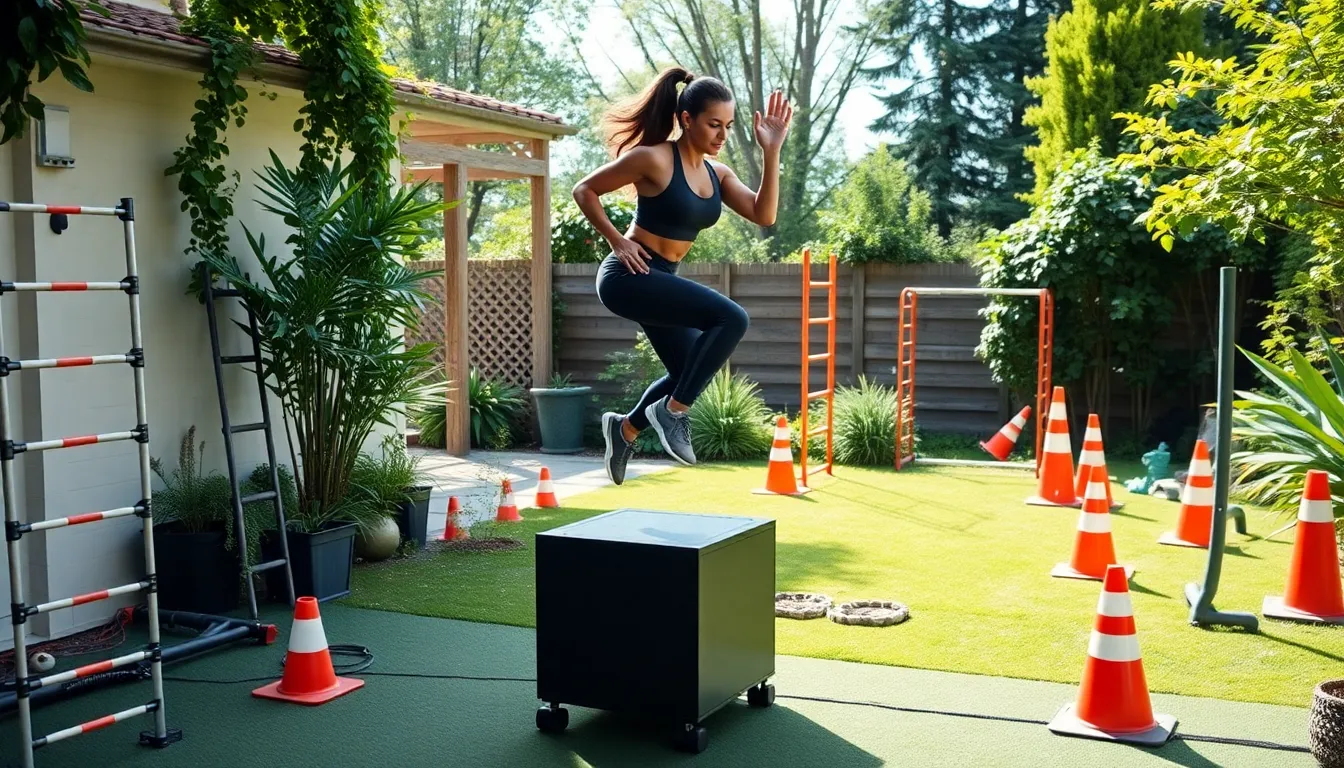
Creating a dedicated HIIT zone transforms your garden gym into a powerhouse for calorie burning and cardiovascular conditioning. We’ll help you design an efficient space that maximizes your high-intensity training potential.
Set Up Space for Plyometric Exercises
Jump platforms serve as the cornerstone of plyometric training, offering adjustable heights for progressive box jump workouts that build explosive power. Position these platforms on stable, level ground with adequate clearance space of at least 8 feet in all directions for safe landing zones.
Battle ropes deliver exceptional ever-changing movement training, improving both power and coordination through full-body engagement. Mount anchor points to sturdy structures like fence posts or dedicated training rigs, ensuring you have 30-50 feet of rope length for optimal workout variety.
Plyometric mats provide essential cushioning for high-impact exercises like burpees, jump squats, and mountain climbers. Choose thick, non-slip rubber mats that measure at least 6×4 feet to accommodate full-body movements safely.
Include Agility Training Equipment
Agility ladders enhance footwork precision through rapid-fire drills that improve speed, coordination, and reaction time. Secure these flat ladders to the ground using stakes or weighted corners, creating 15-20 foot training lanes for comprehensive movement patterns.
Cones and markers establish versatile training courses for shuttle runs, directional changes, and obstacle navigation. Space these markers 5-10 yards apart depending on your fitness level, allowing for progressive difficulty increases as your agility improves.
Speed hurdles add vertical challenge elements to your agility training routine, promoting knee lift and stride efficiency. Set hurdles at varying heights from 6-12 inches to accommodate different skill levels and exercise progressions.
Design Circuit Training Stations
Multi-functional training rigs maximize space efficiency by combining pull-up bars, dip stations, and suspension anchor points into single structures. Install these rigs with 8-foot minimum spacing between stations to prevent interference during high-intensity circuits.
Customizable outdoor functional training stations adapt to exact goals, offering modular components that can be reconfigured based on your workout focus. These systems typically include battle rope anchors, resistance band attachment points, and bodyweight exercise bars.
Circuit rotation zones create structured workout flow by designating exact areas for different exercise types like cardio bursts, strength moves, and recovery periods. Mark these zones with colorful ground markers or painted lines, allowing for timed rotations every 30-60 seconds during HIIT sessions.
Incorporate Suspension Training Systems
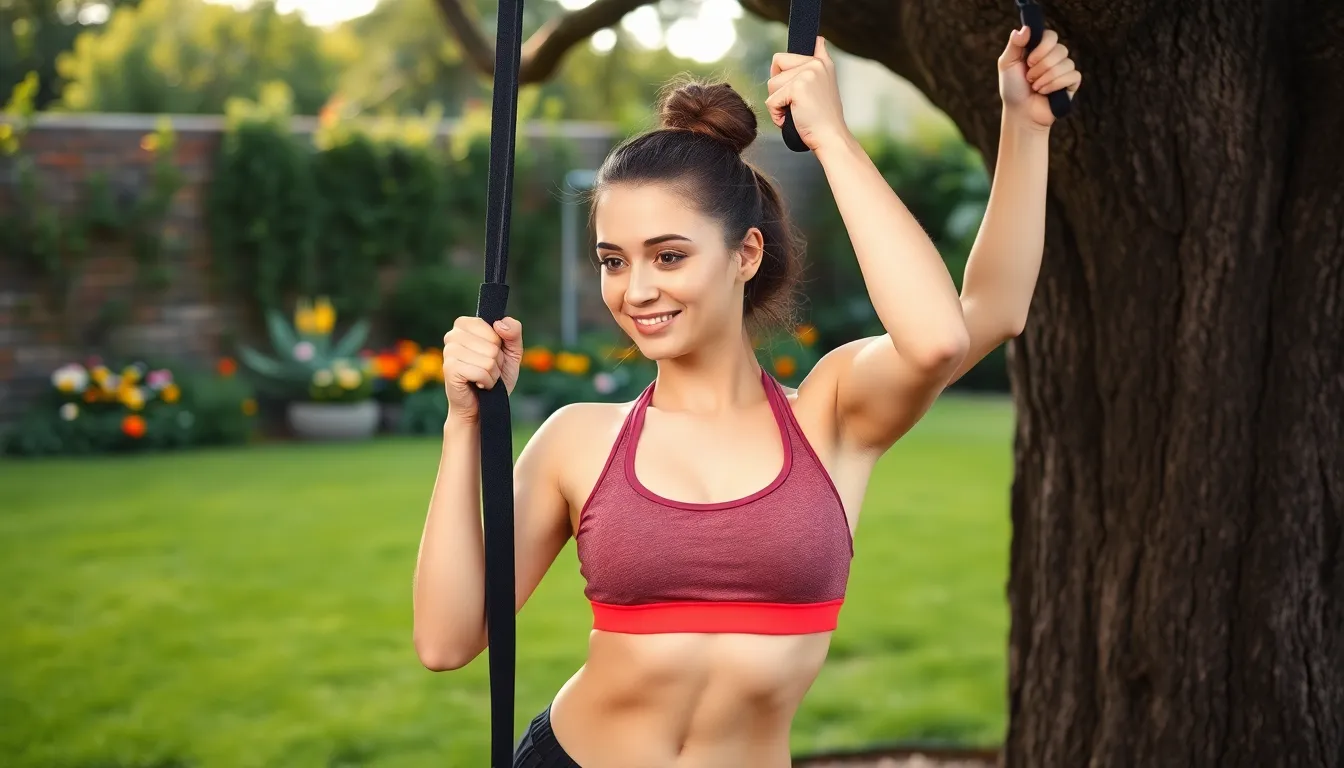
Suspension training brings versatility and efficiency to your garden gym setup. TRX systems and similar suspension trainers transform any outdoor space into a comprehensive strength training zone.
Mount TRX Systems to Trees or Structures
Sturdy trees provide the most natural anchor points for TRX systems in garden gyms. We recommend selecting trees with trunk diameters of at least 8 inches to ensure adequate support for ever-changing movements. Oak, maple, and pine trees typically offer the structural integrity needed for suspension training exercises like chest presses, rows, and squats.
Wooden beams serve as excellent alternatives when suitable trees aren’t available. Mount galvanized steel brackets to pressure-treated lumber measuring at least 4×4 inches for optimal stability. Position these beams at heights between 7-9 feet to accommodate various exercise angles and user heights.
Safety straps protect both your equipment and anchor points from wear and damage. We suggest using tree protection sleeves made from heavy-duty nylon to prevent bark damage and extend the life of your suspension trainer. Always inspect anchor points before each workout to ensure continued safety and stability.
Create Bodyweight Exercise Areas
Pull-up bars form the foundation of effective bodyweight training zones. Install these using galvanized steel pipes mounted between sturdy posts or attach them to existing structures like pergolas or gazebos. Position bars at varying heights to accommodate different exercises and family members.
Parallel bars expand your calisthenics options significantly. Build these using 1.5-inch diameter steel pipes set into concrete footings, spacing them 24 inches apart for optimal arm positioning during dips and L-sits. We recommend heights of 4-5 feet for maximum exercise versatility.
Ground exercise spaces need proper flooring for comfort and safety. Install rubber mats or artificial turf in areas designated for push-ups, squats, and lunges. These surfaces provide cushioning while maintaining stability during ever-changing movements.
Design Functional Movement Spaces
Agility courses enhance speed and coordination using natural and repurposed materials. Create obstacle paths using logs for hurdles, old tires for lateral movements, and rope sections for balance challenges. Space obstacles 3-6 feet apart to allow for varied training intensities and skill levels.
HIIT circuit areas maximize training efficiency in compact spaces. Design stations using natural stones or concrete pavers as markers for different exercise zones. Include spaces for burpees, mountain climbers, and jumping exercises, allowing 6×6 feet per station for safe movement.
Multipurpose lifting platforms accommodate weightlifting and powerlifting exercises. Construct these using plywood sheets over rubber padding, creating stable surfaces for deadlifts, squats, and Olympic lifts. We suggest platform dimensions of 8×8 feet to provide adequate space for barbell movements and safety.
Add Swimming and Water-Based Exercise Options
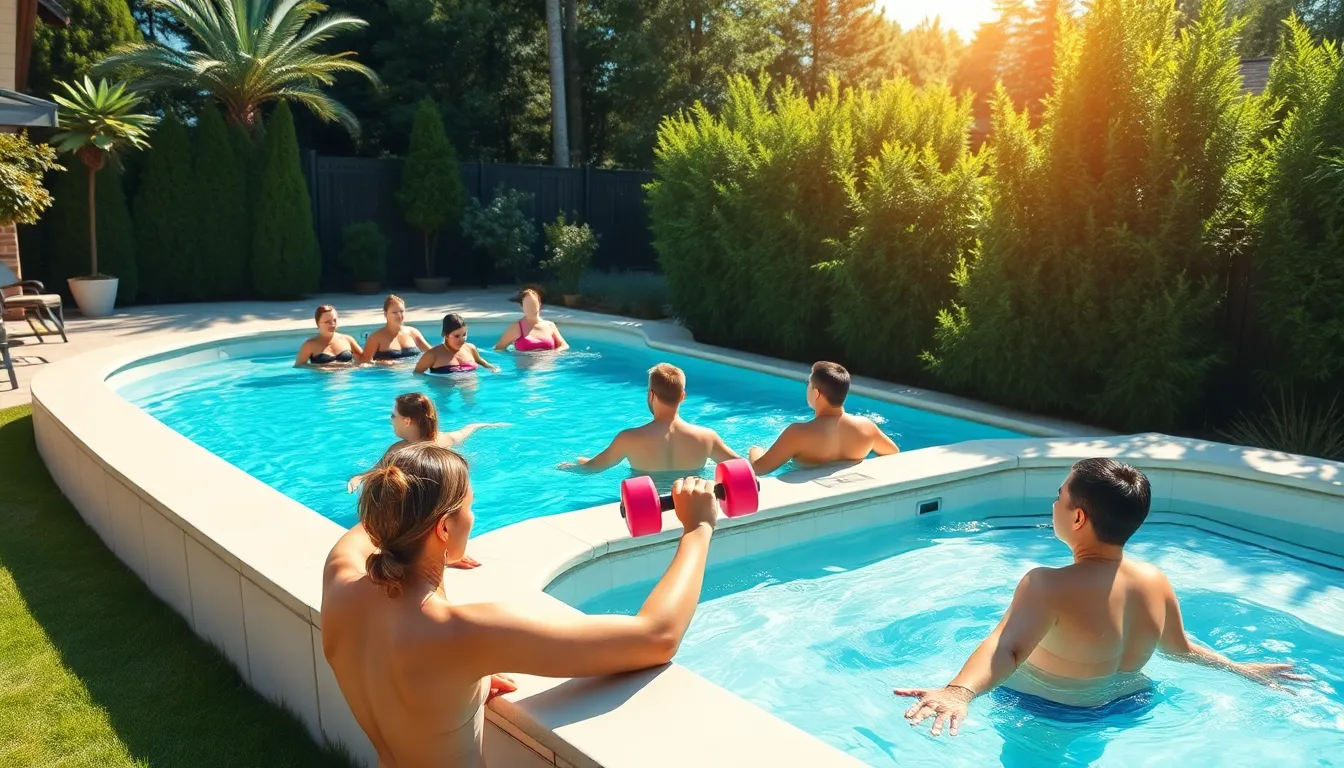
Water features transform our garden gym into a comprehensive fitness destination that supports both intense training and gentle recovery. Swimming and aquatic exercises provide low-impact alternatives that complement our high-intensity workout zones.
Install Above-Ground or In-Ground Pools
Above-ground pools offer the most accessible entry point for adding aquatic fitness to our garden gym setup. Installation costs typically range from $1,500 to $3,500, making them significantly more affordable than permanent alternatives. These portable options require perfectly level and stable surfaces to ensure safety and functionality.
Equipment options for above-ground pools include entry systems, automatic cleaners, and filtration upgrades that rival in-ground functionality. We can choose from various sizes and shapes to fit our available space and budget constraints.
In-ground pools create permanent aquatic fitness centers that seamlessly integrate into our industry design. Excavation and extended installation times make these options more complex, but they support more robust water-based workouts and training programs. These permanent fixtures increase property value while providing year-round exercise opportunities.
Create Aqua Fitness Areas
Aqua fitness zones can be designed within any pool type, focusing on dedicated spaces for water aerobics, resistance training, and rehabilitation exercises. We designate exact areas for different activities to maximize workout efficiency and safety.
Water exercise equipment enhances our aquatic training options significantly. Water dumbbells, resistance bands, and underwater treadmills transform basic pools into comprehensive fitness facilities. These tools provide variable resistance that adapts to our movement speed and intensity.
Shallow water areas accommodate users of different swimming abilities and fitness levels. We can create graduated depths or use platforms to ensure everyone can participate in aqua fitness activities safely and comfortably.
Consider Hot Tubs for Recovery
Hot tubs provide essential hydrotherapy benefits that reduce muscle soreness and promote relaxation after intense garden gym sessions. These recovery tools complement our high-intensity training zones by supporting proper muscle recovery and stress reduction.
Integration options include standalone hot tubs or units connected to our pool systems. Standalone models offer flexibility in placement and can be positioned near our main workout areas for convenient post-exercise recovery sessions.
Temperature therapy supports our overall fitness goals through improved circulation and muscle relaxation. We can schedule regular hot tub sessions as part of our recovery routine, especially after strength training or HIIT workouts in our garden gym.
Establish Proper Storage and Organization

Smart storage transforms our garden gym from cluttered chaos into an efficient workout sanctuary. We’ll maximize every square foot while keeping equipment protected and easily accessible year round.
Build Weather Proof Equipment Storage
Invest in weatherproof storage answers to protect your valuable fitness equipment from rain, sun, and humidity damage. Steel lockers and specially designed outdoor fitness cabinets offer the most durable protection, with some manufacturers providing custom built outdoor storage answers that integrate directly with fitness rigs or function as standalone units.
Choose heavy duty storage containers made from robust plastic materials for budget conscious setups. These containers shield equipment from moisture while remaining portable enough to relocate as your garden gym evolves.
Consider shipping container conversions for the ultimate weatherproof storage solution that doubles as a workout space. We’ve seen fitness enthusiasts transform these containers into complete gym storage systems with built in organization features.
Install lockable steel cabinets near your main workout zones to secure valuable equipment overnight. These cabinets resist weather damage while providing theft protection for expensive items like resistance bands, weights, and electronic devices.
Create Easy Access Answers
Position storage units close to workout zones to minimize time spent retrieving equipment during active training sessions. We recommend placing frequently used items within arm’s reach of your primary exercise areas.
Use open racks and labeled bins for quick equipment retrieval that keeps workouts flowing smoothly. Clear labeling systems help family members and workout partners locate exact items without disrupting ongoing exercises.
Install wall mounted systems that maximize vertical space while keeping equipment visible and accessible. These systems work particularly well for resistance bands, pull up bars, and lightweight accessories.
Add rolling storage carts that bring equipment directly to your workout location. We’ve found these mobile answers especially useful for circuit training sessions that require multiple equipment changes.
Design Towel and Water Bottle Stations
Install dedicated towel hooks or hanging racks positioned under covered areas to keep towels dry and within easy reach. We suggest placing multiple hook stations throughout your garden gym to accommodate different workout zones.
Create specialized bottle holders mounted on walls near your main exercise areas for convenient hydration access. These holders prevent bottles from cluttering your workout space while keeping drinks at comfortable temperatures.
Integrate station features into larger storage units to maximize space efficiency without adding visual clutter. Combined storage answers keep your garden gym organized while maintaining a clean, professional appearance.
Position hygiene stations strategically between high intensity zones and recovery areas to encourage proper workout hygiene. We recommend including antibacterial wipe dispensers alongside towel and water stations for comprehensive cleanliness.
Enhance Your Garden Gym With Smart Technology
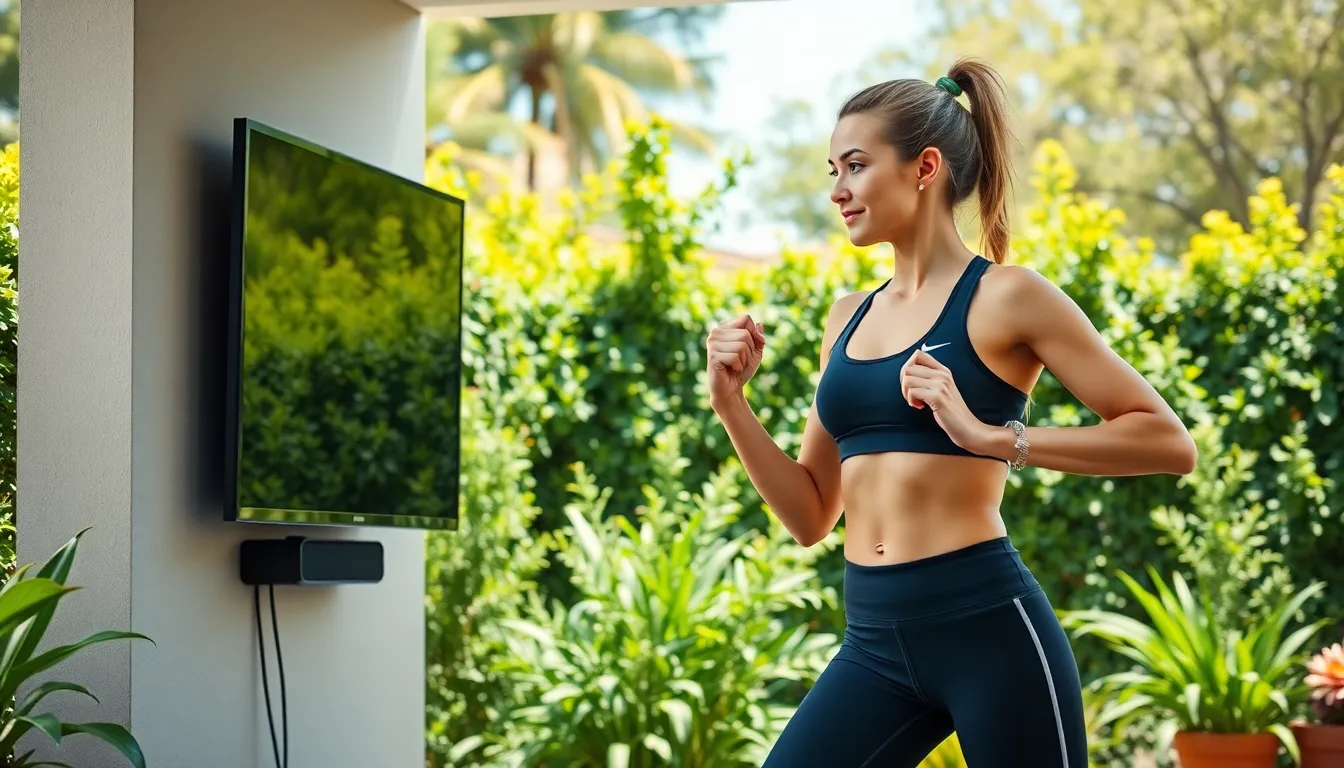
Technology integration transforms our outdoor fitness spaces into modern training environments that rival professional gyms. Smart additions enhance motivation, track progress, and create immersive workout experiences year round.
Install Outdoor Sound Systems
Music amplifies workout intensity and keeps us motivated during challenging training sessions. Bluetooth speakers with IP65 weatherproof ratings withstand rain, humidity, and temperature fluctuations while delivering crystal clear audio throughout our garden gym.
Wireless connectivity allows seamless streaming from smartphones, tablets, and fitness apps without tangled cables. Portable speakers offer flexibility to move audio sources between different workout zones, while permanent installations provide consistent sound coverage across larger spaces.
Battery powered models like JBL Xtreme 3 and Ultimate Ears BOOM 3 deliver 15+ hours of continuous playback. Solar charging options eliminate battery concerns during extended outdoor sessions. Multiple speaker pairing creates surround sound environments that energize high intensity interval training and circuit workouts.
Strategic placement prevents sound interference with neighbors while maximizing audio quality. Corner positioning utilizes natural acoustics from fences and structures. Volume controls and bass adjustments customize audio levels for different exercise types, from gentle yoga sessions to explosive plyometric training.
Add Weather-Resistant TV or Projection Screens
Visual entertainment transforms monotonous cardio sessions into captivating experiences that extend workout duration. Outdoor TVs with brightness ratings above 700 nits remain visible in direct sunlight, while anti glare screens eliminate reflection issues during daytime training.
Weatherproof televisions like Samsung Terrace and SunBrite models feature IP55 ratings that protect against dust and water exposure. Temperature resistance from -4°F to 122°F ensures reliable operation through seasonal weather changes. Built in Wi-Fi connectivity streams fitness videos, workout tutorials, and entertainment content directly to our garden gym.
Projection systems offer larger display options for group workouts and outdoor fitness classes. Short throw projectors minimize space requirements while delivering 100+ inch images on walls, screens, or outdoor projection surfaces. Laser projectors provide superior brightness and color accuracy compared to traditional lamp models.
Mounting answers include articulating arms that adjust viewing angles for different exercise positions. Protective enclosures shield equipment from weather exposure when not in use. Remote controls and mobile apps provide convenient operation without interrupting workout flow.
Incorporate Fitness Tracking Technology
Wearable devices monitor heart rate, calories burned, and workout intensity to optimize training effectiveness. Fitness trackers like Apple Watch Series 9 and Garmin Forerunner models provide GPS tracking for outdoor running circuits and cycling routes within our garden gym space.
Smart sensors integrated into equipment measure repetitions, form quality, and power output during strength training exercises. Force plates and jump mats quantify explosive power development in plyometric training zones. Real time feedback helps maintain proper technique and prevents injury during complex movements.
Mobile apps sync data across multiple devices to create comprehensive fitness profiles and progress tracking. MyFitnessPal, Strava, and Fitbit platforms analyze workout patterns and suggest improvements based on performance metrics. Cloud storage preserves years of training data for long term analysis and goal setting.
Environmental sensors monitor air quality, temperature, and humidity to optimize workout timing and intensity. Weather stations provide real time conditions that influence exercise selection and safety considerations. Smart notifications alert us to ideal training windows and adverse weather conditions.
Wireless charging stations positioned throughout our garden gym keep devices powered during extended training sessions. Solar charging options provide sustainable energy answers for remote outdoor locations. Waterproof cases protect expensive electronics from sweat and weather exposure.
Conclusion
We’ve explored countless possibilities for transforming your backyard into a personalized fitness haven. From budget-friendly DIY answers to professional installations your outdoor space can accommodate any fitness goal or budget.
The beauty of garden gyms lies in their versatility and year-round benefits. Whether you’re creating a peaceful yoga retreat or an intense HIIT zone you’re investing in both your health and property value.
Remember that the best garden gym is one that matches your lifestyle and fitness preferences. Start small with basic equipment and gradually expand as your needs evolve. With proper planning weather protection and creative design you’ll have a fitness sanctuary that rivals any commercial gym while offering the privacy and convenience of home.
Frequently Asked Questions
What are the main benefits of creating a garden gym?
Garden gyms offer significant cost savings compared to gym memberships, provide fresh air and natural lighting, ensure complete privacy, and can increase your property value. You’ll have 24/7 access to your fitness space without commuting, and can customize it to your specific workout preferences and fitness goals.
How much space do I need for an outdoor fitness area?
You don’t need a large space to create an effective garden gym. Even a small corner of your backyard can work with proper planning. The key is maximizing vertical space with pull-up bars and choosing multi-functional equipment that serves multiple exercise purposes.
What flooring options work best for outdoor gyms?
Rubber mats, artificial turf, and concrete or paver foundations are ideal for outdoor fitness spaces. These materials provide safety, comfort, and durability. Rubber mats offer cushioning for high-impact exercises, while concrete provides stability for heavy equipment. Ensure proper drainage regardless of your choice.
Can I build a garden gym on a budget?
Absolutely! DIY options include building pull-up bars with galvanized steel pipes, using natural elements like logs and rocks for agility courses, and repurposing household items like old tires. Creative solutions and resourcefulness can create effective workout spaces without significant investment.
What weather protection do I need for my outdoor gym?
Install covered areas like pergolas or canopies to protect against rain and excessive sun. Ensure proper drainage to prevent water accumulation. Choose weather-resistant equipment made from stainless steel or treated aluminum. Consider windbreaks using natural barriers like trees and shrubs.
How do I choose the right location in my backyard?
Select a private corner away from neighbors for comfort and focus. Look for level ground or areas that can be easily leveled. Consider proximity to your house for convenience, access to power if needed, and natural shade or sun exposure based on your preferences.
What storage solutions work best for outdoor fitness equipment?
Weatherproof storage is essential. Use steel lockers, heavy-duty plastic containers, and weatherproof storage boxes. Position storage units close to workout zones for easy access. Consider built-in benches with storage compartments and wall-mounted systems for smaller items like yoga mats.
Is professional installation necessary for outdoor fitness equipment?
While DIY options exist, professional installation ensures safety and proper setup for complex equipment. Companies like Pro Playgrounds offer turnkey installations with warranties. For simple equipment like pull-up bars, DIY is feasible, but commercial-grade multi-station equipment benefits from professional assembly.
How can I incorporate technology into my garden gym?
Install weatherproof outdoor sound systems for music streaming, weather-resistant TVs or projection screens for entertainment during cardio, and fitness tracking technology to monitor performance. Smart lighting systems and app-controlled equipment can enhance your outdoor workout experience.
What equipment is essential for a complete garden gym?
Essential equipment includes pull-up bars, parallel bars, resistance bands, and weatherproof storage. For comprehensive training, consider multi-functional workout stations, suspension training systems like TRX, agility equipment like cones and ladders, and appropriate flooring for safety and comfort.

